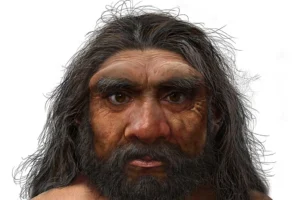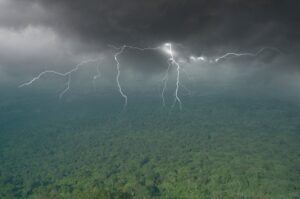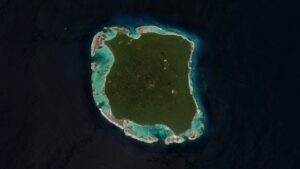In the seemingly endless slew of Jurassic Park spinoffs, ancient saurian predators — both real and invented — seem to receive most of the computer-generated spotlight.
But sauropods, the long-necked family of enormous herbivores, deserve just as much attention, as new research makes abundantly clear. These colossal animals moved through ancient forests on pillar-like legs, using their absurdly reachy necks to pluck tasty leaves from the upper canopy.
And now paleontologists have discovered a new record-holder for longest neck of them all: the Mamenchisaurus.
First discovered in China in 1987, this sauropod long remained a mystery to researchers. While searching the red sandstone of the country’s fossil-rich Shishugou Formate, they only discovered a few bones. But the lower jaw, some bits of skull and a few vertebrae were enough to prove that it was a distinct species.
The Mamenchisaurus walked ancient marshes at the same time as primitive T-rexes 162 million years ago. However, the bones weren’t enough to paint a reliable estimate of its size. Until now.
Ver esta publicación en Instagram
A neck that could peek over a four-story building
A study published last week in the Journal of Systematic Paleontology suggests this enormous dino’s neck reached a length of over 15 meters — longer than Brontosaurus, Apatosaurus, or Diplodocus. To put that into some modern perspective, that’s eight times the length of a giraffe’s neck or roughly the height of a four-story building.
“By using these more complete, but smaller specimens, we can scale up and make a pretty competent estimate of what Mamenchisaurus would have looked like,” Andrew Moore, a paleontologist at Stony Brook University who studies sauropod anatomy, told The New York Times.
Scaling up from a few bones
Many dinosaurs remain difficult to fully classify, as researchers often have only scant fossils to analyze. That’s especially true for the largest dinosaurs, whose complete skeletons rarely survive.
“What’s particularly tantalizing and frustrating is that oftentimes, the longest necks belong to the things that are the least known in the fossil record for the simple reason that it’s really hard to bury something that large,” said Moore, who led the new study.
He compared the few bones of Mamenchisaurus to fossils of several of its relatives, especially Xinjiangtitan, a slightly older sauropod discovered in northwest China in 2013.
Ver esta publicación en Instagram
In a rare find, researchers unearthed Xinjiangtitan’s entire vertebral column. At about 13 meters long, it represents the longest complete neck in the fossil record. By comparing it with fossils from Mamenchisaurus, Moore estimated that the latter dino was likely even bigger.
So big, in fact, that its neck accounted for about half of its estimated body length. That led to another important question: How the heck could this dinosaur function?
By using a CT scanner on its vertebrae, Moore and his team found that empty pockets of air accounted for 77 percent of each bone’s volume, much like modern birds. That reduced the weight of its spinal column to something manageable. Researchers also found long rods of bony tissue that improved support at the cost of flexibility.
As any dinosaur nerd can tell you, it seems that researchers discover a newer, bigger dinosaur every few years. Moore told The New York Times that other sauropods might have rivaled even Mamenchisaurus.
Something even larger out there?
“We don’t really know what the limits are, because they continue to push them as we make more and more discoveries,” Moore said. “Our default should always be to assume that there’s something larger out there.”
It’s news that any dinosaur lover would embrace: There’s always a bigger dino.






